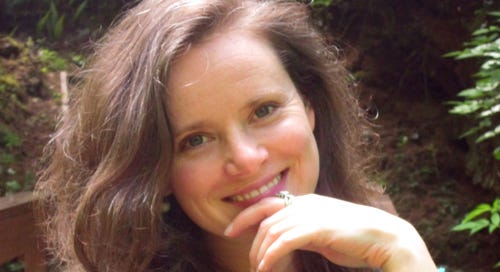I am an avid reader of Weiland’s Writing advice blog HelpingWritersBecomeAuthors.com. she offers great insights into the writing and character development process from a different perspective than I do with this blog, and I strongly recommend you read us both! But she is also an accomplished fantasy author in her own right, and I asked her a few questions on her approach to storytelling. Check it out below.
What inspires your writing?
Most of my ideas are born out of intense emotional experiences with other people’s art (books, movies, music), which are then juxtaposed with several other such experiences or ideas until they become full-fledged stories in their own right.
What are some of your methods for handling worldbuilding and establishing a believable and immersive setting in your stories?
Most of my ideas begin with a mental image of a character—and I usually get at least a sense of where he or she is or what he or she is wearing. This will show me what kind of setting the story will need to take place in. There’s some leeway though. For instance, my gaslamp fantasy Wayfarer came to me as more of a medieval setting, but I ended up drifting into Georgian England, in part as an ode to my love for Charles Dickens.
When looking at story through the lens of story theory, everything in the story becomes thematic. The setting can, of course, be used to symbolically represent any thematic philosophy. But more than that, it should be seen as part of the thematic landscape that has both created the story’s initial problematic or limited viewpoint and is now “proving” this viewpoint’s limitation via the problems the character is experiencing in his or her personal life (which then prompt the plot events).
An obvious example of this is Man vs. the System, in which a problematic social paradigm (e.g., dystopian government, etc.) has groomed the character in the initial thematic Lie the Character Believes, but also created the social dynamics that prompt the character to evolve into a broader mindset in order to address the initial problems.
What are some of the methods you have used to generate interest in your book?
Start building an email list as soon as you can, since this will be your only assured direct route to dedicated readers. Give them content they care about to keep their attention: drawings, freebies, special deals, glimpses into your life. Craft your book launches with care, since Amazon’s sales algorithms will treat you right if you can prove early on that you can generate sales. And most of all—have fun! Don’t let marketing be a chore; embrace it as a challenge. Your audience will sense that attitude and respond to it.
What aspect of the book writing process do you find the most challenging?
For me, antagonists have always been challenging. I get bored if the protagonist isn’t onscreen when I’m writing—so personally I try to avoid antagonist POVs.
What are you writing now?
I’m in the midst of outlining a new fantasy story, tentatively titled Wildblood. I’m envisioning it as something of a dark fairy tale/grail myth, about an immortal protector and a dying princess. Having a ton of fun with it!
What is your advice to other writers?
Write for the love of it, first and foremost. As Anne Lamott says, “Being published isn’t all it’s cracked up to be. But writing is.” Write the stories of your heart, not the stories you think the market wants. Write the story you’d want to read if you were one of your own readers.
Be sure to check her books out at https://www.kmweiland.com/, and if you haven’t already, subscribe to Prose & Quans! I post author interviews every month, and writing advice articles every week.




